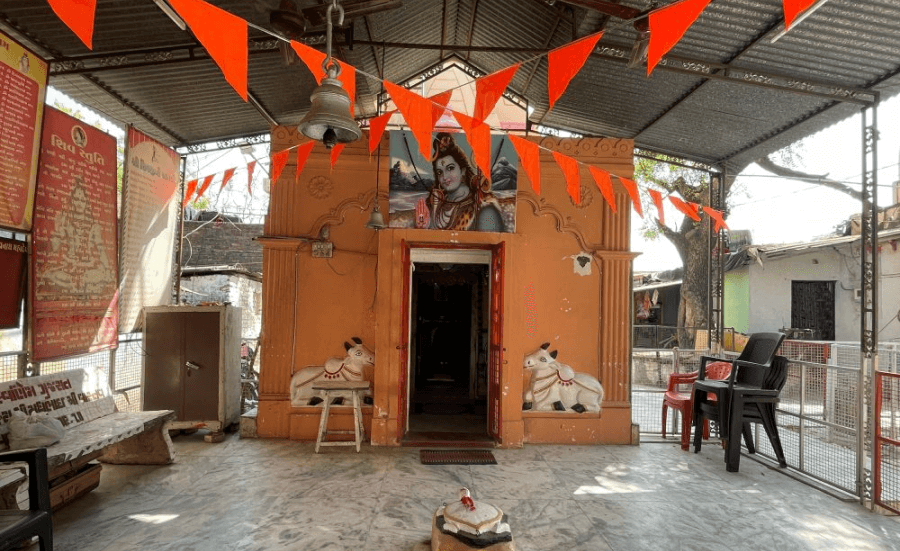
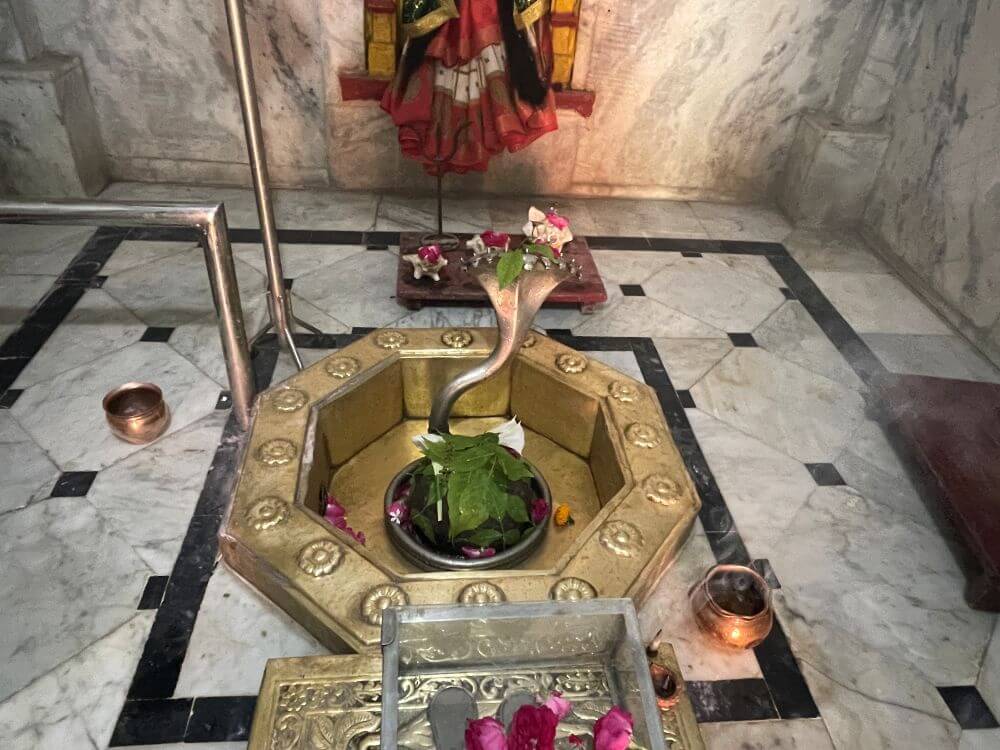 Located on the banks of the Vishwamtri River, the Ramnath Mahadev Temple is the second among the nine Mahadev temples considered the protectors of Vadodara city. It is believed that Lord Ram himself resided in this area and worshipped the Shiv Lingam here. The temple is said to have been established around 525 years ago, during the Gujarat Sultanate period. Devotees believe that worshiping Ramnath Mahadev alleviates all sorrow and suffering and many observe five or seven consecutive Mondays of fasting and prayer here.
Located on the banks of the Vishwamtri River, the Ramnath Mahadev Temple is the second among the nine Mahadev temples considered the protectors of Vadodara city. It is believed that Lord Ram himself resided in this area and worshipped the Shiv Lingam here. The temple is said to have been established around 525 years ago, during the Gujarat Sultanate period. Devotees believe that worshiping Ramnath Mahadev alleviates all sorrow and suffering and many observe five or seven consecutive Mondays of fasting and prayer here.
According to legend, the area once known as Vatpatrak or Vatpatrapur was a dense forest. Sage Vishwamitra, the composer of the sacred Gayatri Mantra in the Rigveda, performed intense penance in this region and established nine Shiv Lingams, now known as the Navnath Mahadev. 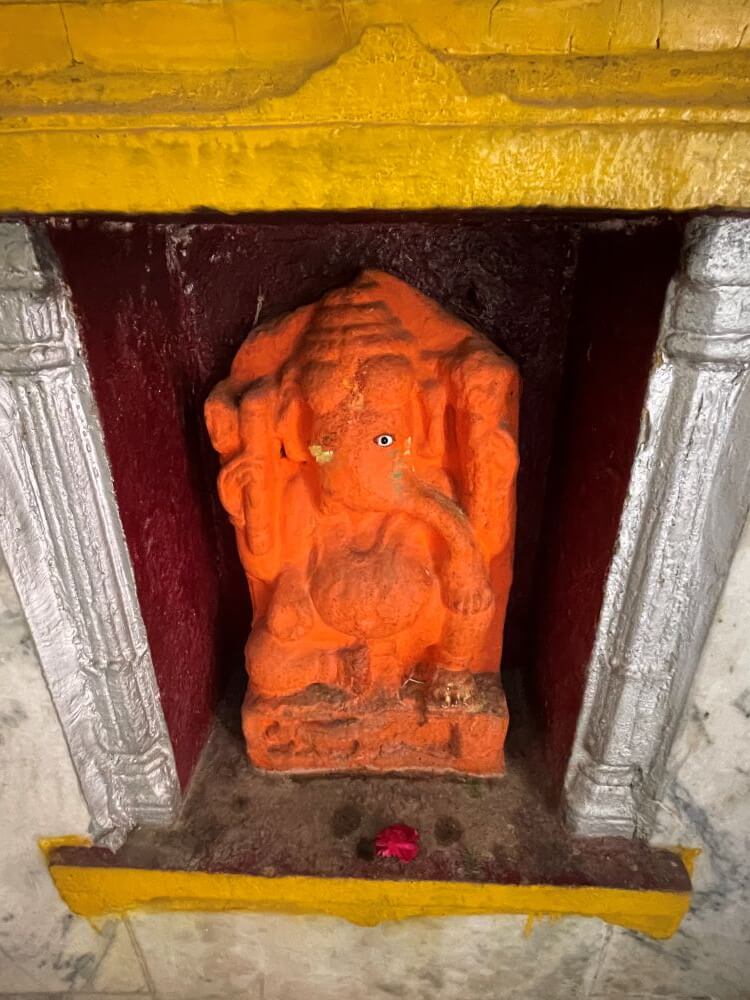 Among them, Ramnath Mahadev is considered the second in sequence. It is believed that Lord Rama, along with Seeta and Lakshman, stayed here for a night during their exile. During this stay, Lord Rama shot an arrow into the ground to create a pond for the Jalabhishek (water offering) to the Shiv Lingam. This pond came to be known as Ramnath Talav. Since Lord Rama worshipped here, the temple was named Ramnath Mahadev.
Among them, Ramnath Mahadev is considered the second in sequence. It is believed that Lord Rama, along with Seeta and Lakshman, stayed here for a night during their exile. During this stay, Lord Rama shot an arrow into the ground to create a pond for the Jalabhishek (water offering) to the Shiv Lingam. This pond came to be known as Ramnath Talav. Since Lord Rama worshipped here, the temple was named Ramnath Mahadev.
According to Goswami Narendragiri Panchamgiri, the temple priest, the temple and monastery were built around 1500 AD by Bhagatgiri Goswami, during the reign of Sultan Muhammad Shah I (Muhammad Begda) of Gujarat. Around 1700 AD, the temple faced destruction from the Babi dynasty, of Pashtun-Afghan origin, which had assimilated into Gujarati culture. Though originally from Afghanistan, the Babis were considered Gujarati by the Mughal emperors. They established princely states like Junagadh, Radhanpur, Balasinor and Sardargadh. Notably, the late Bollywood actress Parveen Babi belonged to this dynasty. During the Mughal decline in Gujarat, Mohammad Khan Bahadur Khanji I of the Babi dynasty declared independence and established his rule in Junagadh, which led to conflicts with the Marathas. The temple reportedly suffered during this time, but legend says that divine miracles protected it from destruction. Members of the Gaekwad royal family of Baroda frequently visited this temple for darshan.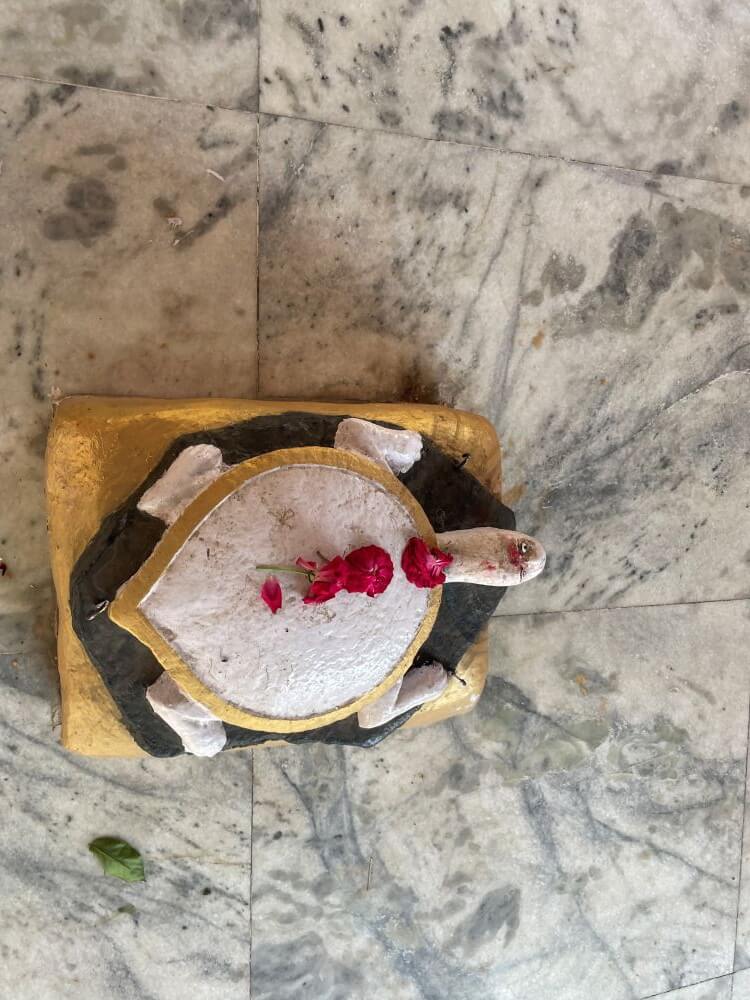
Another local legend tells of a Brahmin named Shambhu Maharaj, who regularly recited the Shrimad Bhagavat Katha at the temple around 100 years ago. One day, while reciting, he is said to have had a vision of a Manidhar Naga (a mythical serpent). According to the legend of Manidhara Naga mentioned in R. E. Enthoven’s book ‘The Folklore of Bombay’, this serpent has an extremely valuable gem on its head. Such a serpent appeared before Shambhu Maharaj. It was at least a thousand years old, had a jeweled necklace on its head and large whiskers. The temple priests say that this serpent has also appeared to some local devotees.
The Ramnath Mahadev Temple is located at an elevated spot near the Ramnath Cremation Ground in Gajrawadi. A small flight of steps leads to the temple courtyard. A large tin shed with a stone idol of Nandi stands at the entrance. A second tin shed near the main temple houses a small turtle idol on a platform. The temple features a main hall (sabhamandap) and a sanctum (garbhagriha), topped with a pyramid-shaped shikhara (spire).
On both sides of the entrance to the assembly hall are large relief sculptures of Nandi. A large image of Shiv is placed at the lintel position above the door frame. In the shrines within the assembly hall are statues of Ganesha and Hanuman.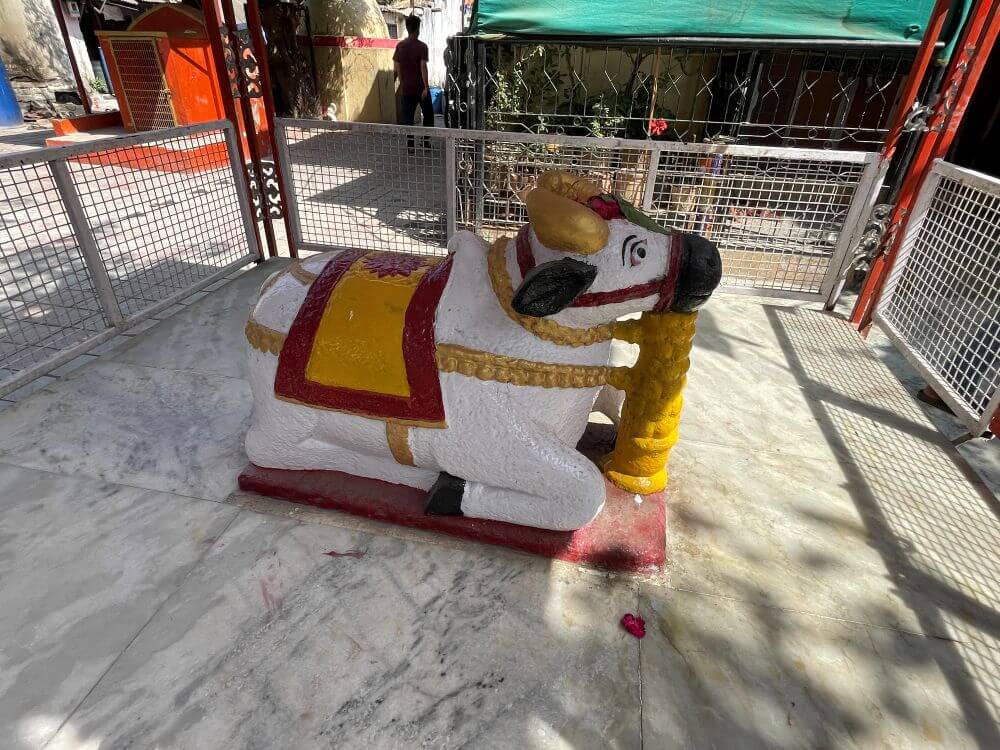 In the sanctum sanctorum, the Shivling is installed in a small depression in the center of the ground level. Around it is an octagonal metal frame (Shalunka). Due to the continuous water ablution from the overhead water vessel, the upper part of the Shivling has become slightly flat. A silver serpent holds a canopy over the Shivling. Above the water vessel is a silver umbrella. To the left of the Shivling is a tall trident and near the lingam, in a glass box, are paduka (sacred footwear). In the shrine on the wall behind the pindi (pedestal) is the place of Mother Parvati.
In the sanctum sanctorum, the Shivling is installed in a small depression in the center of the ground level. Around it is an octagonal metal frame (Shalunka). Due to the continuous water ablution from the overhead water vessel, the upper part of the Shivling has become slightly flat. A silver serpent holds a canopy over the Shivling. Above the water vessel is a silver umbrella. To the left of the Shivling is a tall trident and near the lingam, in a glass box, are paduka (sacred footwear). In the shrine on the wall behind the pindi (pedestal) is the place of Mother Parvati.
In the vicinity of this temple, there are also temples of Trilokinath Mahadev, Nateshwar Mahadev, Amarnath Mahadev and Nandeshwar Mahadev. Among these, the Amarnath Mahadev temple was renovated on February 9, 1962. In front of this temple, in the open, is a stone statue of Nandi and in the antarala (vestibule) are places for Ganesha and Hanuman.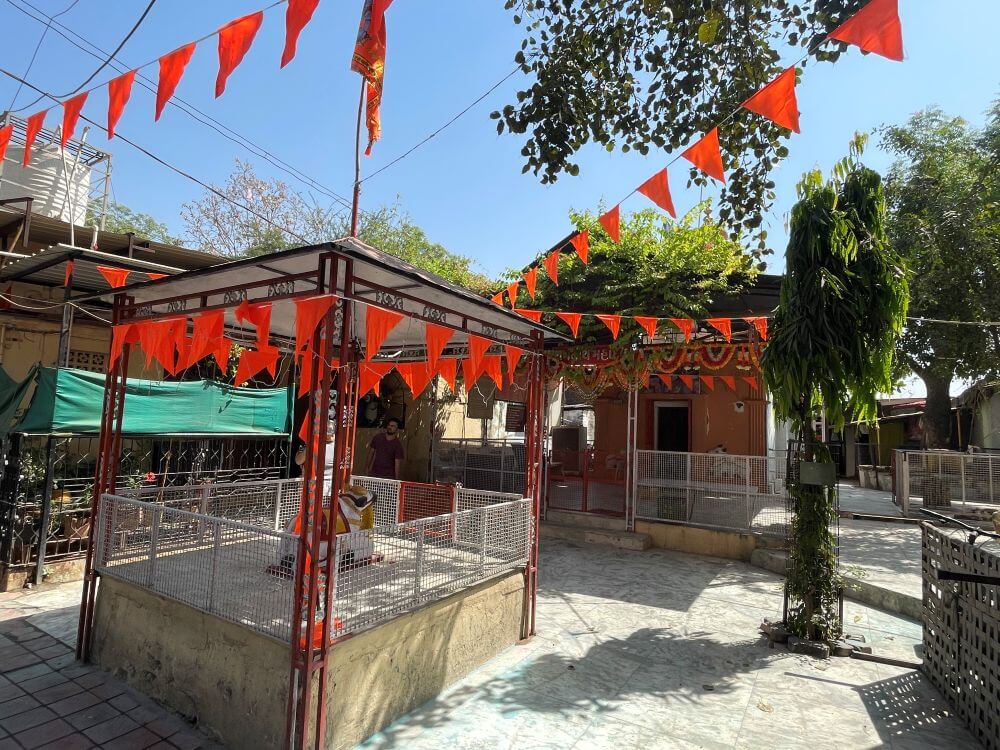 In the sanctum is a Shivling over which a serpent holds a canopy. Near the wall behind the Shivling is the place of Parvati as well as the eight-armed Mother Goddess. There are also samadhis (memorial shrines) of some saints in this temple complex. There were many Shivlings in this area. These, along with Nandi and other ancient idols of gods and goddesses, have been preserved on a platform near the Ramnath Mahadev temple.
In the sanctum is a Shivling over which a serpent holds a canopy. Near the wall behind the Shivling is the place of Parvati as well as the eight-armed Mother Goddess. There are also samadhis (memorial shrines) of some saints in this temple complex. There were many Shivlings in this area. These, along with Nandi and other ancient idols of gods and goddesses, have been preserved on a platform near the Ramnath Mahadev temple.
Various festivals and celebrations are enthusiastically observed at the Ramnath Mahadev Temple. Every Monday during the month of Shravan, the area becomes crowded with devotees. Hundreds of devotees come to this temple for darshan on each Monday of Shravan. On the last Monday of Shravan, the Kavad Yatra (pilgrimage with water pots) that begins from the Siddhanath Mahadev temple concludes at the Jaganath Mahadev temple. This Kavad Yatra also visits this temple. Thousands of devotees participate in this Kavad Yatra organized by the city’s Navnath Mahadev Kavad Yatra Committee.



